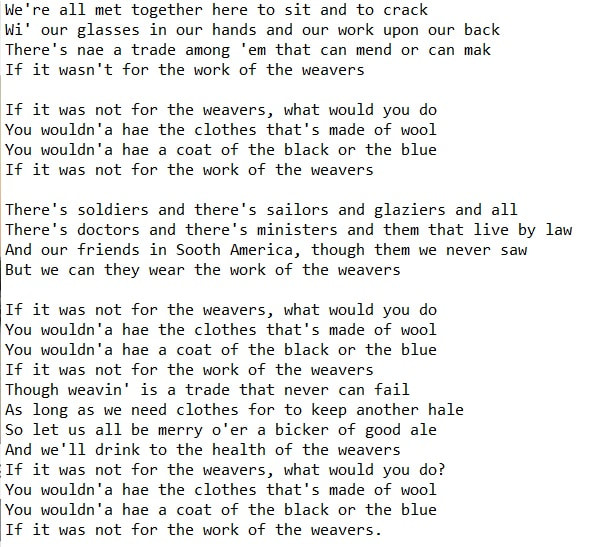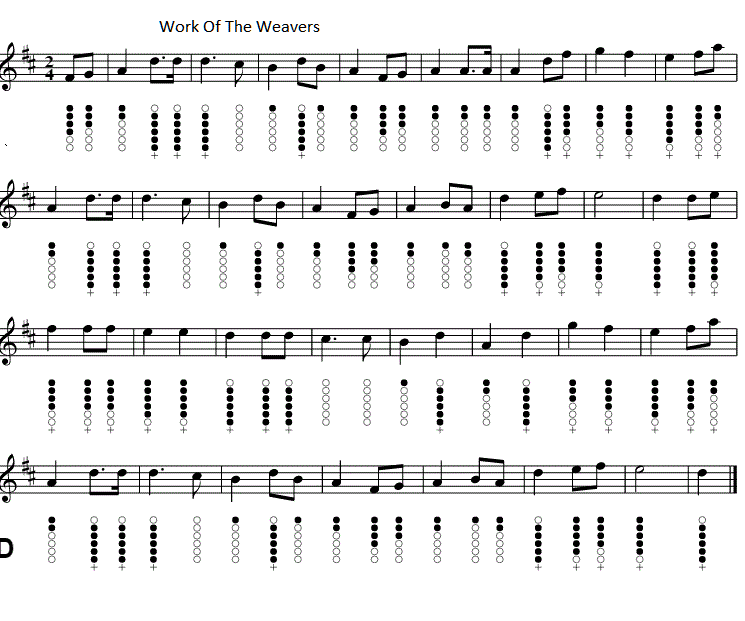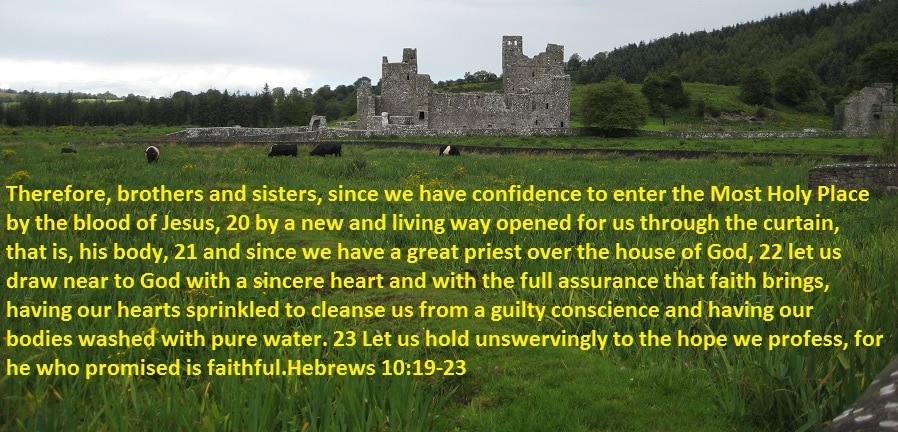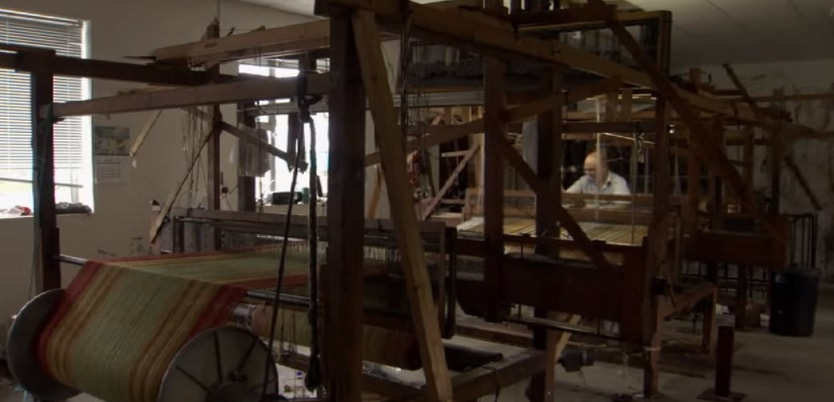The Work Of The Weaver Lyrics And Chords
Written by David Shaw Recorded by The Clancy Brothers And Tommy Makem, Ewan McColl, Ray Fisher And By The Corries. The sheet music and whistle notes are included. Also recorded by Frobisher Bay Volunteers and North Sea Gas. Ewan McColl must has spent his whole life writing or recording considering the amount of content I have come across while putting this website together. But I suppose here in Ireland he'll always be remembered for writing the song Dirty Old Town and being the daddy of Kirsty. Guitar chords in G Major in chordpro.
[G]We're all met together here to[C] sit and to[G] crack
Wi' our glasses in our hands and our [C]work upon our[G] back
There's nae a trade among 'em that can[C] mend or can[G] mak
If it wasn't for the work of the[D] wea[G]vers
If it[G] was not for the [D]weavers, [C]what would you[G] do
You [C]wouldn'a hae the[G] clothes that's[C] made of [D]wool
You [G]wouldn'a hae a coat of the[C] black or the [G]blue
If it was not for the work of the [D]wea[G]vers
There's soldiers and there's sailors and glaziers and all
There's doctors and there's ministers and them that live by law
And our friends in Sooth America, though them we never saw
But we can they wear the work of the weavers
If it was not for the weavers, what would you do
You wouldn'a hae the clothes that's made of wool
You wouldn'a hae a coat of the black or the blue
If it was not for the work of the weavers
Though weavin' is a trade that never can fail
As long as we need clothes for to keep another hale
So let us all be merry o'er a bicker of good ale
And we'll drink to the health of the weavers
If it was not for the weavers, what would you do?
You wouldn'a hae the clothes that's made of wool
You wouldn'a hae a coat of the black or the blue
If it was not for the work of the weavers
The Work Of The Weavers Lyrics
We're all met together here to sit and to crack
Wi' our glasses in our hands and our work upon our back
There's nae a trade among 'em that can mend or can mak
If it wasn't for the work of the weavers
If it was not for the weavers, what would you do
You wouldn'a hae the clothes that's made of wool
You wouldn'a hae a coat of the black or the blue
If it was not for the work of the weavers
There's soldiers and there's sailors and glaziers and all
There's doctors and there's ministers and them that live by law
And our friends in Sooth America, though them we never saw
But we can they wear the work of the weavers
If it was not for the weavers, what would you do
You wouldn'a hae the clothes that's made of wool
You wouldn'a hae a coat of the black or the blue
If it was not for the work of the weavers
Though weavin' is a trade that never can fail
As long as we need clothes for to keep another hale
So let us all be merry o'er a bicker of good ale
And we'll drink to the health of the weavers
If it was not for the weavers, what would you do?
You wouldn'a hae the clothes that's made of wool
You wouldn'a hae a coat of the black or the blue
If it was not for the work of the weavers.
Here's the guitar chords in the key of D
[D]We're all met together here to[G] sit and to[D] crack
Wi' our glasses in our hands and our [G]work upon our[D] back
There's nae a trade among 'em that can[G] mend or can[D] mak
If it wasn't for the work of the[A] wea[D]vers
If it[D] was not for the [A]weavers, [G]what would you[D] do
You [G]wouldn'a hae the[D] clothes that's[G] made of [A]wool
You [D]wouldn'a hae a coat of the[G] black or the [D]blue
If it was not for the work of the [A]wea[D]vers
Wi' our glasses in our hands and our [C]work upon our[G] back
There's nae a trade among 'em that can[C] mend or can[G] mak
If it wasn't for the work of the[D] wea[G]vers
If it[G] was not for the [D]weavers, [C]what would you[G] do
You [C]wouldn'a hae the[G] clothes that's[C] made of [D]wool
You [G]wouldn'a hae a coat of the[C] black or the [G]blue
If it was not for the work of the [D]wea[G]vers
There's soldiers and there's sailors and glaziers and all
There's doctors and there's ministers and them that live by law
And our friends in Sooth America, though them we never saw
But we can they wear the work of the weavers
If it was not for the weavers, what would you do
You wouldn'a hae the clothes that's made of wool
You wouldn'a hae a coat of the black or the blue
If it was not for the work of the weavers
Though weavin' is a trade that never can fail
As long as we need clothes for to keep another hale
So let us all be merry o'er a bicker of good ale
And we'll drink to the health of the weavers
If it was not for the weavers, what would you do?
You wouldn'a hae the clothes that's made of wool
You wouldn'a hae a coat of the black or the blue
If it was not for the work of the weavers
The Work Of The Weavers Lyrics
We're all met together here to sit and to crack
Wi' our glasses in our hands and our work upon our back
There's nae a trade among 'em that can mend or can mak
If it wasn't for the work of the weavers
If it was not for the weavers, what would you do
You wouldn'a hae the clothes that's made of wool
You wouldn'a hae a coat of the black or the blue
If it was not for the work of the weavers
There's soldiers and there's sailors and glaziers and all
There's doctors and there's ministers and them that live by law
And our friends in Sooth America, though them we never saw
But we can they wear the work of the weavers
If it was not for the weavers, what would you do
You wouldn'a hae the clothes that's made of wool
You wouldn'a hae a coat of the black or the blue
If it was not for the work of the weavers
Though weavin' is a trade that never can fail
As long as we need clothes for to keep another hale
So let us all be merry o'er a bicker of good ale
And we'll drink to the health of the weavers
If it was not for the weavers, what would you do?
You wouldn'a hae the clothes that's made of wool
You wouldn'a hae a coat of the black or the blue
If it was not for the work of the weavers.
Here's the guitar chords in the key of D
[D]We're all met together here to[G] sit and to[D] crack
Wi' our glasses in our hands and our [G]work upon our[D] back
There's nae a trade among 'em that can[G] mend or can[D] mak
If it wasn't for the work of the[A] wea[D]vers
If it[D] was not for the [A]weavers, [G]what would you[D] do
You [G]wouldn'a hae the[D] clothes that's[G] made of [A]wool
You [D]wouldn'a hae a coat of the[G] black or the [D]blue
If it was not for the work of the [A]wea[D]vers
Introduction
Weaving is an ancient craft that has been used to create clothing and textiles for thousands of years. It involves the interlacing of two sets of threads, known as the warp and the weft, to create a fabric. This process is done on a loom, which can be either a simple hand-held frame or a large, mechanized machine. Weaving has played an important role in the development of human civilization, providing a means of creating clothing, shelter, and other essential items.
The History of Weaving
The history of weaving can be traced back to prehistoric times, with evidence of woven fabrics found in archaeological sites dating back to 5000 BC. The earliest forms of weaving were done by hand, using a simple warp-weighted loom. This method of weaving was labor-intensive and limited in its ability to produce large quantities of fabric.
As civilizations advanced, so did the techniques and tools used in weaving. The development of the horizontal loom in ancient Egypt and the invention of the vertical loom in ancient Greece were significant advancements in the history of weaving. These looms allowed for the production of larger and more complex woven fabrics, leading to the growth of the textile industry.
Weaving in Different Cultures
Weaving has been an integral part of many cultures throughout history. Each culture has its unique techniques and styles of weaving, which are often passed down from generation to generation. For example, the Navajo people of North America are known for their intricate tapestries and rugs woven on a vertical loom. In South America, the Inca civilization used backstrap looms to create colorful and complex textiles. In Asia, the art of silk weaving has been practiced for centuries, with China being the first country to develop the silk industry.
The Industrial Revolution and Weaving
The Industrial Revolution in the 18th and 19th centuries brought significant changes to the textile industry and the practice of weaving. The development of mechanized looms, such as the power loom, revolutionized the production of textiles, making it faster and more efficient. This led to the mass production of fabrics, making them more accessible and affordable for the general population.
The Role of Weaving in Society
Weaving has not only played a crucial role in the production of clothing and textiles but has also had a significant impact on society. In ancient civilizations, weaving was often a traditional craft passed down from mother to daughter, and it was considered an essential skill for women. In some cultures, weaving was also seen as a form of art, with intricately woven fabrics being used for ceremonial purposes.
Weaving also played a significant role in the economy, with the growth of the textile industry leading to the development of trade routes and the establishment of new cities and towns. The Industrial Revolution brought about a shift in the way textiles were produced, leading to the growth of factories and the rise of the working class.
The Revival of Weaving in Modern Times
With the rise of mass-produced, machine-made fabrics, the traditional craft of weaving saw a decline. However, in recent years, there has been a revival of interest in hand-weaving and other traditional crafts. This has been fueled by a growing interest in sustainable and ethically-made products, as well as a desire for unique, handmade items.
Weaving is now seen as a form of art and a way of preserving cultural heritage, rather than just a means of production. It has also become a popular hobby, with weaving classes and workshops being offered in many communities.
Conclusion
In conclusion, weaving has a rich history that spans across different cultures and has played a significant role in the development of human civilization. From its humble beginnings as a hand-held craft to the industrialized process of mass production, weaving has evolved significantly over the centuries. Its influence can be seen in the economy, society, and culture, and its revival in modern times is a testament to its enduring appeal. Weaving remains a vital craft that continues to provide us with beautiful and essential items, and its significance will continue into the future.
Weaving is an ancient craft that has been used to create clothing and textiles for thousands of years. It involves the interlacing of two sets of threads, known as the warp and the weft, to create a fabric. This process is done on a loom, which can be either a simple hand-held frame or a large, mechanized machine. Weaving has played an important role in the development of human civilization, providing a means of creating clothing, shelter, and other essential items.
The History of Weaving
The history of weaving can be traced back to prehistoric times, with evidence of woven fabrics found in archaeological sites dating back to 5000 BC. The earliest forms of weaving were done by hand, using a simple warp-weighted loom. This method of weaving was labor-intensive and limited in its ability to produce large quantities of fabric.
As civilizations advanced, so did the techniques and tools used in weaving. The development of the horizontal loom in ancient Egypt and the invention of the vertical loom in ancient Greece were significant advancements in the history of weaving. These looms allowed for the production of larger and more complex woven fabrics, leading to the growth of the textile industry.
Weaving in Different Cultures
Weaving has been an integral part of many cultures throughout history. Each culture has its unique techniques and styles of weaving, which are often passed down from generation to generation. For example, the Navajo people of North America are known for their intricate tapestries and rugs woven on a vertical loom. In South America, the Inca civilization used backstrap looms to create colorful and complex textiles. In Asia, the art of silk weaving has been practiced for centuries, with China being the first country to develop the silk industry.
The Industrial Revolution and Weaving
The Industrial Revolution in the 18th and 19th centuries brought significant changes to the textile industry and the practice of weaving. The development of mechanized looms, such as the power loom, revolutionized the production of textiles, making it faster and more efficient. This led to the mass production of fabrics, making them more accessible and affordable for the general population.
The Role of Weaving in Society
Weaving has not only played a crucial role in the production of clothing and textiles but has also had a significant impact on society. In ancient civilizations, weaving was often a traditional craft passed down from mother to daughter, and it was considered an essential skill for women. In some cultures, weaving was also seen as a form of art, with intricately woven fabrics being used for ceremonial purposes.
Weaving also played a significant role in the economy, with the growth of the textile industry leading to the development of trade routes and the establishment of new cities and towns. The Industrial Revolution brought about a shift in the way textiles were produced, leading to the growth of factories and the rise of the working class.
The Revival of Weaving in Modern Times
With the rise of mass-produced, machine-made fabrics, the traditional craft of weaving saw a decline. However, in recent years, there has been a revival of interest in hand-weaving and other traditional crafts. This has been fueled by a growing interest in sustainable and ethically-made products, as well as a desire for unique, handmade items.
Weaving is now seen as a form of art and a way of preserving cultural heritage, rather than just a means of production. It has also become a popular hobby, with weaving classes and workshops being offered in many communities.
Conclusion
In conclusion, weaving has a rich history that spans across different cultures and has played a significant role in the development of human civilization. From its humble beginnings as a hand-held craft to the industrialized process of mass production, weaving has evolved significantly over the centuries. Its influence can be seen in the economy, society, and culture, and its revival in modern times is a testament to its enduring appeal. Weaving remains a vital craft that continues to provide us with beautiful and essential items, and its significance will continue into the future.
The weavers song lyrics [2]
In the quiet of the morning
Before the sun has risen high
The weaver starts their work
With thread and loom in hand they sigh
Creating something beautiful
From strands of different hue
With every stitch and every knot
Their masterpiece starts to bloom
Chorus:
Oh the work of the weaver
A dance of thread and art
Each piece a unique creation
A true reflection of the heart
Verse 2:
With patience and precision
They weave their magic touch
Each movement intentional
As they create with love and such
Their hands may be weary
But their heart is full of pride
For every tapestry they craft
Is a story to be told and guide
Chorus:
Oh the work of the weaver
A dance of thread and art
Each piece a unique creation
A true reflection of the heart
Bridge:
With every piece they weave
A part of them is left behind
A little piece of their soul
In every thread intertwined
Chorus:
Oh the work of the weaver
A dance of thread and art
Each piece a unique creation
A true reflection of the heart
Outro:
So here's to the weaver
Whose hands create such grace
Their work will live on forever
A timeless beauty to embrace.
In the quiet of the morning
Before the sun has risen high
The weaver starts their work
With thread and loom in hand they sigh
Creating something beautiful
From strands of different hue
With every stitch and every knot
Their masterpiece starts to bloom
Chorus:
Oh the work of the weaver
A dance of thread and art
Each piece a unique creation
A true reflection of the heart
Verse 2:
With patience and precision
They weave their magic touch
Each movement intentional
As they create with love and such
Their hands may be weary
But their heart is full of pride
For every tapestry they craft
Is a story to be told and guide
Chorus:
Oh the work of the weaver
A dance of thread and art
Each piece a unique creation
A true reflection of the heart
Bridge:
With every piece they weave
A part of them is left behind
A little piece of their soul
In every thread intertwined
Chorus:
Oh the work of the weaver
A dance of thread and art
Each piece a unique creation
A true reflection of the heart
Outro:
So here's to the weaver
Whose hands create such grace
Their work will live on forever
A timeless beauty to embrace.




